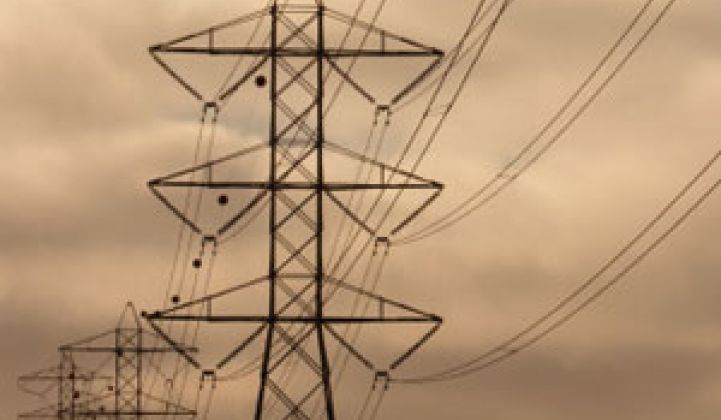Six electric utilities and transmission companies plan to file a $4.93 billion proposal on Friday to build a roughly 2,400-mile transmission lines to ferry wind power in Texas.
The companies seek to build the 345-kilovolt lines in the five Competitive Renewable Energy Zones established by the Public Utility Commissions of Texas this year. The commission created the zones to implement a 2005 state law, which aims to spur transmission-line constructions by identifying areas with potentials for future wind farm developments.
The new transmission lines could lead to about 18.5 gigawatts of new wind-power projects in the state's central western region and the Panhandle, according to the commission (see commission report).
Studies by the Electric Reliability Council of Texas, which the commission directed to identify and recommend locations for the transmission lines and estimate the amount of power that would be developed in those areas, came up with the scope of the transmission lines project and the $4.93 billion estimated project cost.
The consortium includes Electric Transmission Texas, LCRA Transmission Services Corp., Oncor Electric Delivery, Sharyland Utilities, South Texas Electric Cooperative and Texas-New Mexico Power Co.
The companies will have to pay for building their part of the new network. Electric Transmission, for one, estimated that its share of the project would cost $1.5 billion to $1.7 billion.
The consortium's proposal will need approval from the utility commission.
Renewable-energy advocates consider the lack of new or upgraded transmission networks to be a missing link in all of these public and private efforts to promote wind, solar and other renewable energy in the United States. The country's electric grid is rickety and lacks the capacity to support the increasing amount of renewable energy. Yet utilities and transmission providers have largely been reluctant to invest in expensive new lines.
The electric-power industry would have to spend $60 billion on transmission lines to enable wind energy to make up 20 percent of the country's power supply by 2030, according to the U.S. Department of Energy.
In many states, power companies have to share their transmission lines to promote competition, a mandate that offers little incentives for the companies to invest in new networks.
The wind-energy boom in the country has sharpened the focus on the aging grid. Many wind energy developers are leery of erecting turbines in areas with inadequate or no transmission networks (see Wind Power Waiting on Transmission-Line Boom).
One wealthy developer, T. Boone Pickens, said he would build his own transmission lines. Pickens, a wind-energy and natural-gas evangelist, plans to spend about $12 billion to build a 4-gigawatt wind project, along with supporting transmission lines, in the Texas Panhandle (see T. Boone Pickens Has a Plan).
While renewable-energy project developers, including power companies, fret over the aging electric grid, they continue to invest heavily in new solar and wind power plants.
The United States has doubled its wind energy generating capability in the last two years, reaching more than 20 gigawatts, the American Wind Energy Association said last week (see U.S. Wind Power Doubles in Two Years).
Texas leads other states in wind-energy development. The Lone Star State had installed about 5.31 gigawatts of wind-power plants by the first quarter of this year, according to a state report called the "2008 Texas State Energy Plan" released in July.
More power companies and transmission-line operators are beginning to propose plans to build new lines. In August, American Electrical Power and Duke Energy said they had formed a joint venture to build 240 miles of 765-kilovolt transmission lines for $1 billion (see Duke, AEP to spend $1B on New Transmission Lines). American Electric also is a part owner of the Electric Transmission Texas.
But some companies face policy obstacles in building the lines.
In Pennsylvania, Allegheny Energy has asked the state Public Utilities Commission to postpone a decision on its transmission-line project after two administrative law judges last month recommended the commission reject the project (see Pa. Judges Recommend Blocking Transmission Line). The judges' recommendation focused on 37 miles of a 500-kilovolt transmission line that would run from the northern part of Virginia to the southwestern part of Pennsylvania.
The Pennsylvania part of the project has been controversial as some residents have been skeptical of the need for the line and the proposed route, saying it will enable more coal-fired power plants.
The company asked for 90 days explore "new and creative alternatives" to address its transmission goals.



